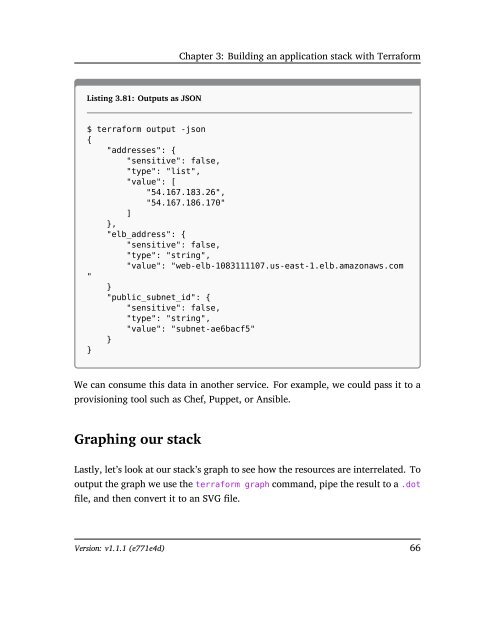The Terraform Book
TheTerraformBook_sample
TheTerraformBook_sample
Create successful ePaper yourself
Turn your PDF publications into a flip-book with our unique Google optimized e-Paper software.
Chapter 3: Building an application stack with <strong>Terraform</strong><br />
Listing 3.81: Outputs as JSON<br />
$ terraform output -json<br />
{<br />
"addresses": {<br />
"sensitive": false,<br />
"type": "list",<br />
"value": [<br />
"54.167.183.26",<br />
"54.167.186.170"<br />
]<br />
},<br />
"elb_address": {<br />
"sensitive": false,<br />
"type": "string",<br />
"value": "web-elb-1083111107.us-east-1.elb.amazonaws.com<br />
"<br />
}<br />
"public_subnet_id": {<br />
"sensitive": false,<br />
"type": "string",<br />
"value": "subnet-ae6bacf5"<br />
}<br />
}<br />
We can consume this data in another service. For example, we could pass it to a<br />
provisioning tool such as Chef, Puppet, or Ansible.<br />
Graphing our stack<br />
Lastly, let’s look at our stack’s graph to see how the resources are interrelated. To<br />
output the graph we use the terraform graph command, pipe the result to a .dot<br />
file, and then convert it to an SVG file.<br />
Version: v1.1.1 (e771e4d) 66


